Boarding our DMZ tour bus...
...and making a run to the border - no, not Taco Bell - we do the must-do visit of the Demilitarized Zone between South and North Korea.
Many tourists come here to check it all out - there's almost an amusement park atmosphere at the tourist reception stop - in fact there is a small amusement park here.
Nearby are several memorials of various types...
To the left below, the old railway bridge brought down in the Korean War, to the right is a new railway bridge. There'd been an ongoing exchange of industrial material across the new bridge with a factories operating just across the border in the North and owned by industrialists in the South - but it's now been shutdown as the South became frustrated with the ongoing push by the North to develop nuclear weapons for which they figured some profits by the factory was supporting the effort. There's always future hope that reunification will happen, and the South talks of someday taking a train across this bridge all the way to Paris.
Cheeky ornaments for the kids that go on these tours.
Trolley cars displaying flags of the nation's that supported South Korea during the 1950's conflict.
We reboard our bus and head closer to the border going through multiple military checkpoints shown below. The rain just keeps coming down unfortunately.
We get within 1500 meters (about a mile) of the border within the DMZ and must walk up this hill to an observation complex. Along that walk are warnings about stepping off the road into an area where explosive mines may still lie.
Now at Dora Observatory we start by getting oriented in the auditorium of what we could see out the window and on the observation deck, if it were not steadily raining with a lot of haze and mist in the air restricting our views of North Korea - blah!
From the open observation deck here it is - low clouds, rain and fog over North Korea.
Digital displays point out the landmarks hiding behind the fog and mist.
Here's a live shot from Gerri's phone - yes, we are just a short stroll from that wonderland known as North Korea. (we're at the blue dot inside the white dot, and the border is the dark grey line)
A zoomed in shot from Google Earth Map shows us in the area of the red arrow shown below.
At the green arrow is the Joint Security Area (JSA), where South and North military personnel stare at each other just yards apart on either side of the border and where meeting buildings host periodic discussions about administration of the DMZ. This spot is a well known feature of the DMZ for tourists wanting to experience the DMZ up close and personal. Tours to this area can be done by making reservations months in advance - we prefer to stay flexible by only planning 1-5 days ahead, especially for reservations, so the JSA wasn't really an option for us.
At the green arrow is the Joint Security Area (JSA), where South and North military personnel stare at each other just yards apart on either side of the border and where meeting buildings host periodic discussions about administration of the DMZ. This spot is a well known feature of the DMZ for tourists wanting to experience the DMZ up close and personal. Tours to this area can be done by making reservations months in advance - we prefer to stay flexible by only planning 1-5 days ahead, especially for reservations, so the JSA wasn't really an option for us.
Where we didn't go - the JSA:
Where we did go - the observatory:
Where we're going next on this bus tour - "The Third Tunnel":
Cool exhibition building at the third tunnel:
"The "Third Tunnel of Aggression" (Third Infiltration Tunnel or 3rd Tunnel) is one of four known tunnels under the border between North Korea and South Korea, extending south of Panmunjom.
Only 44 km (27 miles) from Seoul, the incomplete tunnel was discovered in October 1978 following the detection of an underground explosion in June 1978, apparently caused by the tunnellers who had progressed 435 metres (1,427 feet) under the south side of the Korean Demilitarized Zone (DMZ). It took four months to locate the tunnel precisely and dig an intercept tunnel.
The incomplete tunnel is 1,635 metres (1.0 mile) long, 1.95 m (6 ft 5 in) at its maximum height and 2.1 m (6 ft 11 in) wide and runs through bedrock at a depth of about 73 m (240 ft) below ground. It was apparently designed for a surprise attack on Seoul from North Korea, and could accommodate 30,000 men per hour along with light weaponry. Upon discovery of the third tunnel, the United Nations Command accused North Korea of threatening the 1953 Korean Armistice Agreement signed at the end of the Korean War. Its description as a "tunnel of aggression" was given by South Korea, who considered it an act of aggression on the part of North Korea."
Only 44 km (27 miles) from Seoul, the incomplete tunnel was discovered in October 1978 following the detection of an underground explosion in June 1978, apparently caused by the tunnellers who had progressed 435 metres (1,427 feet) under the south side of the Korean Demilitarized Zone (DMZ). It took four months to locate the tunnel precisely and dig an intercept tunnel.
The incomplete tunnel is 1,635 metres (1.0 mile) long, 1.95 m (6 ft 5 in) at its maximum height and 2.1 m (6 ft 11 in) wide and runs through bedrock at a depth of about 73 m (240 ft) below ground. It was apparently designed for a surprise attack on Seoul from North Korea, and could accommodate 30,000 men per hour along with light weaponry. Upon discovery of the third tunnel, the United Nations Command accused North Korea of threatening the 1953 Korean Armistice Agreement signed at the end of the Korean War. Its description as a "tunnel of aggression" was given by South Korea, who considered it an act of aggression on the part of North Korea."
No photos were allowed inside the tunnel. They gave us hardhats, as once you descend the long steepish access tunnel and enter the North Korean built tunnel the low ceiling (between 5-6 feet) provides lots of opportunities for "ouch". There are bulkhead walls in the tunnel (see white walls below) that keep you from waltzing right under North Korea. The climb back up is a real workout.
A recreation above ground of the barrier walls inside the tunnel.
Evidence here of what the tour guide described - paraphrasing her - "yes, there's an ongoing threat of renewed conflict - although this has gone on for decades and will probably continue for decades, we have to live our lives and enjoy ourselves".
At the end of the tour, we stopped in a village inside the DMZ where villagers run a cafeteria-buffet. Simple grub that tasted delicious.
We share a sampling of soy based ice cream - not so creamy, but good stuff.
Back in Seoul at an amazing brewery, in fact it's called "Amazing Brewery".
Wow, they even have a wooden box from our favorite Belgian Trappist brewery - a rare item amongst beer aficionados. You can only obtain them by driving up to the St. Sixtus brewery in the farmlands of Belgium and having a monk place it in your trunk filled with beer bottles.
...and of course pizza to soak up the beer.

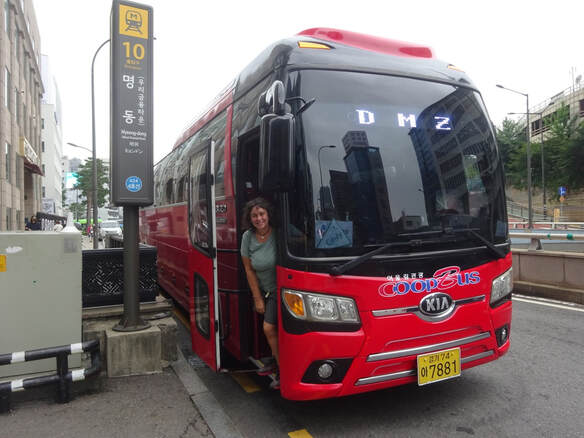





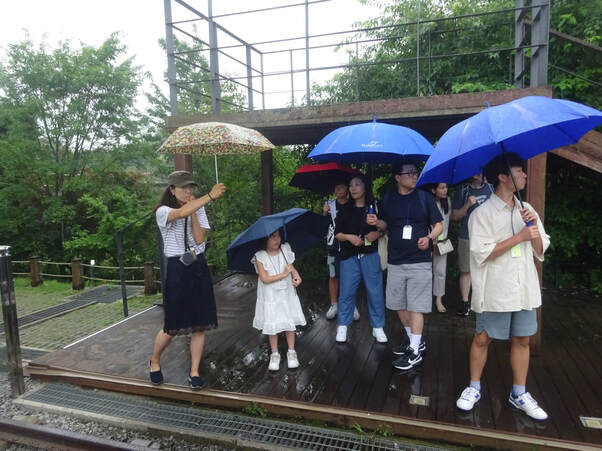

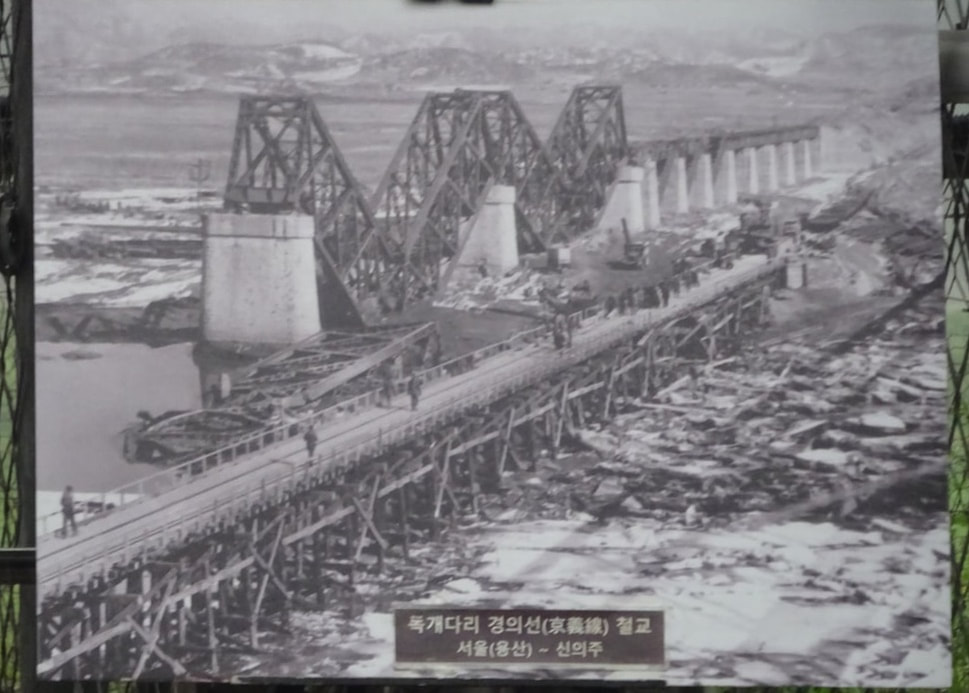

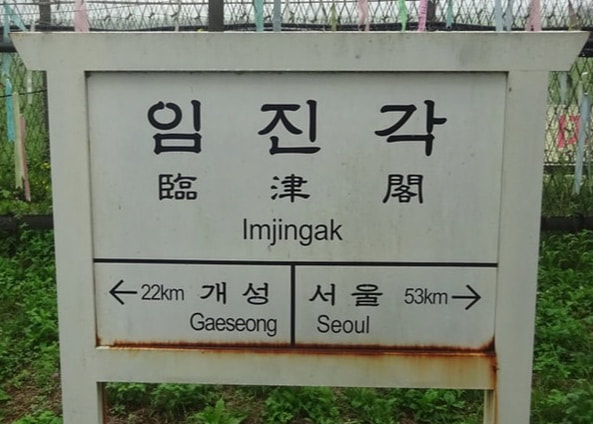





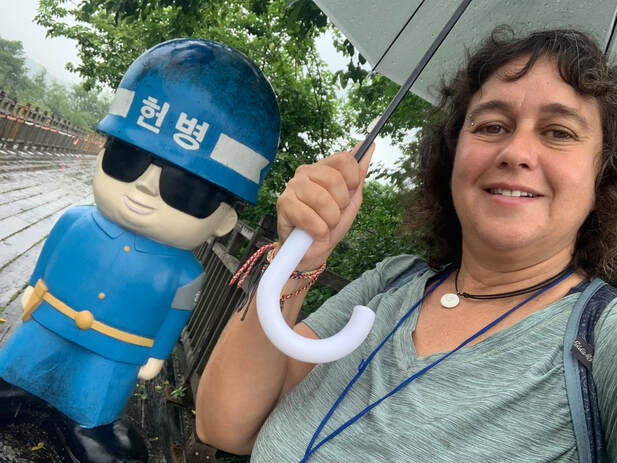



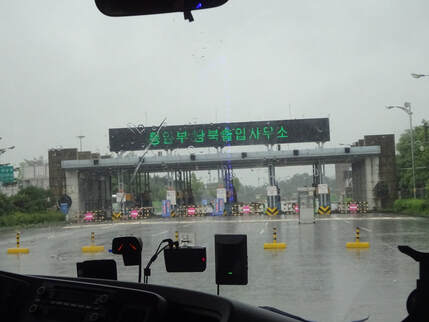































 RSS Feed
RSS Feed
